|
|
 
 Warfare and Society in Imperial Rome, C. 31 BC-AD 280 Warfare and Society in Imperial Rome, C. 31 BC-AD 280 
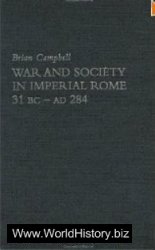 Warfare and Society in Imperial Rome, C. 31 BC-AD 280 Routledge Author: Brian Campbell 2002 Pages: 224 Format: PDF Size: 4,5 mb Language: English This well-documented study of the Roman army provides a crucial aid to understanding the Roman Empire in economic, social and political terms. Employing numerous examples, Brian Campbell explores the development of the Roman army and the expansion of the Roman Empire from 31 BC-280 AD. When Augustus established a permanent, professional army, this implied a role for the Emperor as a military leader. Warfare and Society in Imperial Rome examines this personal association between army and emperor, and argues that the Emperor's position as commander remained much the same for the next 200 years.
 
 Gifts for the Gods: Images from Ancient Egyptian Temples Gifts for the Gods: Images from Ancient Egyptian Temples 
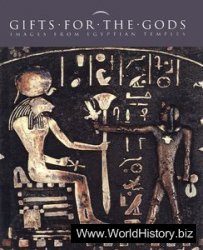 Author: Deborah Schorsch Gifts for the Gods: Images from Ancient Egyptian Temples Metropolitan Museum of Art 2007 ISBN: 1588392317 Language: English Pages: 256 Format: PDF Size: 33,03 МБ Throughout their long history, the ancient Egyptians crafted luminous statues of bronze, copper, silver, and gold for use in interactions with their gods—from ritual dramas enacted in the inner sanctuaries of temples to festival processions and celebrations attended by the multitudes. This volume, which accompanies an exhibition at The Metropolitan Museum of Art, is the first to focus on the art and significance of Egyptian metal statuary.
 
 Mound Builders and Cliff Dwellers Mound Builders and Cliff Dwellers 
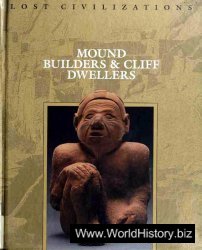 Mound Builders and Cliff Dwellers (Lost Civilizations Series) Time-Life Books 1992 Format: PDF Pages: 176 Language: English Size: 22.7 MB Mound Builders and Cliff Dwellers is one of twenty-four volumes in the Time-Life book series Lost Civilizations. This series explores the worlds of the past, using the finds of archaeologists and other scientists to bring ancient peoples and their cultures vividly to life. This volume describes the archaeology of pre-Columbian North America with an emphasis on the Eastern Woodlands and the Southwest. Chapters One and Two reveal the Adena, Hopewell, and Mississippian cultures of the Eastern Woodlands. These cultures are known as Mound Builder societies as they constructed large earthen mounds for burial, religious, and ceremonial purposes. Many of these mounds are in the shapes of animals or unique geometric figures. These cultures flourished from around 500 B.C. to A.D. 1500. The Sinagua, Hohokam, Mogollon, and Anasazi cultures of the Southwest are described in Chapters Three and Four; these cultures flourished from around 200 and 1450 A.D. and are collectively known as Cliff Dwellers, though the term more accurately applies only to the Anasazi. Numerous photographs of artifacts, ruins, and archaeological sites enhance the narrative. In conclusion, Mound Builders and Cliff Dwellers is a great depiction of the pre-Columbian archaeology of North America. Includes maps, index, and bibliography. Highly recommended.
 
 Legends of the Gods. The Egyptian Texts, edited with Translations Legends of the Gods. The Egyptian Texts, edited with Translations 
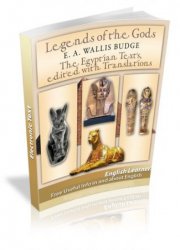 Author: E. A. Wallis Budge Legends of the Gods. The Egyptian Texts, edited with Translations Kegan Paul, Trench and Trьbner & Co. Ltd. 1912 Format: pdf Size: 1.93 mb + 3% Language:English THE welcome which has been accorded to the volumes of this Series, and the fact that some of them have passed into second and third editions, suggest that these little books have been found useful by beginners in Egyptology and others. Hitherto the object of them has been to supply information about the Religion, Magic, Language, and History of the ancient Egyptians, and to provide editions of the original texts from which such information was derived. There are, however, many branches of Egyptology which need treatment in a similar manner in this Series, and it has been suggested in many quarters that the time has now arrived when the publication of a series of groups of texts illustrating EGYPTIAN LITERATURE in general might well be begun. Seeing that nothing is known about the authors of Egyptian works, not even their names, it is impossible to write a History of Egyptian Literature in the ordinary sense of the word. The only thing to be done is to print the actual works in the best and most complete form possible, with translations, and then to put them in the hands of the reader and leave them to his judgment.
 
 Bronze Age Cultures in Central and Eastern Europe Bronze Age Cultures in Central and Eastern Europe 
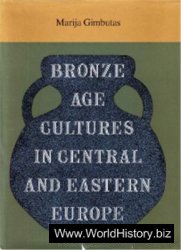 Author: Gimbutas M. Bronze Age Cultures in Central and Eastern Europe Paris, London: Mouton & Co 1965 Pages: 774 Format: pdf Size: 42 mb Language: English "This volume should not be considered Part II of the author's Prehistory of Eastern Europe (1956). Since it was central Europe that played the formative role on the continent during the Bronze Age, the present monograph takes on a wider scope and is independent of the former book. This monograph is meant for the student of European archaeology, not for the lay reader. This year is not yet the date for a fluently readable book on the Bronze Age of Europe to appear. We are in the period of a "gold rush" of discovery. The spontaneity of research and the increasing accumulation of archaeological material exists without being evaluated, analysis and synthesis always being behind the pace of excavation. My task, therefore, was to summarize and evaluate the first hand sources of about fifteen countries. I believed that drawing together as much information as possible in order to make the complicated cultural history of the second millennium B.c. more understandable, could not be postponed. Unfortunately, the book must appear before the new dating techniques, particularly the Carbon 14 method, could become of wider use in central and eastern Europe, and before the results of the analyses of metal objects have been published. I release this work without the feeling that it is as I wished it to be, but in writing this sort of monograph I hoped to help the younger members of the family of archaeologists by making the heretofore unknown sources accessible and summarized in a familiar language, as well as bringing forward new facts, concepts, hypotheses, classifications, and labels."
 
 Kingdoms of the Celts - A History and Guide Kingdoms of the Celts - A History and Guide 
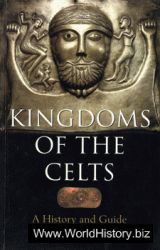 Author: John King Kingdoms of the Celts - A History and Guide Blandford Pr 1999 Format: PDF Pages: 256 Language: English Size: 94 MB With their vigorous and distinctive culture -- rich in music, art, and language -- the Celts have captured the imagination of people throughout the world. But who exactly are they, where were their earliest kingdoms, and how did their religious and social practices develop? This "guidebook" to Celtic history traces in fascinating detail their origins in Europe (including the name "Celt" itself); historical descriptions of their appearance and behavior; their social structure; and their migration from La Tene, Switzerland, to the British Isles. Portraits of warrior kings and queens, the legendary, chivalric King Arthur, and the Welsh and Breton royal dynasties vividly capture their personalities and the worlds in which they lived. Throughout, photos and illustrations display artifacts, artwork, and maps, as well as Celtic poetry and lively excerpts from historical accounts.
 
 Life in Ancient Mesopotamia Life in Ancient Mesopotamia 
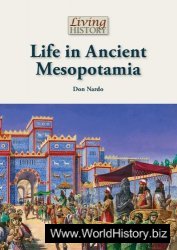 Author: Don Nardo Life in Ancient Mesopotamia (Living History) Referencepoint Press 2013 Format: PDF Size: 6.6 Mb Language: English Living in ancient Mesopotamia could sometimes be harsh and dangerous, yet it could also be comfortable and fulfilling because the early inhabitants invented cities, writing, and other key elements of civilized life. Farming, trade, the home, education, womens roles, religious beliefs, technology and transportation are only some of the topics discussed in this revealing social history.
 
 Invisible Armies - An Epic History of Guerrilla Warfare From Ancient Times to the Present Invisible Armies - An Epic History of Guerrilla Warfare From Ancient Times to the Present 
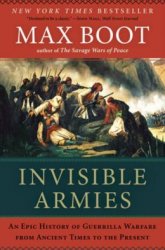 Author: Max Boot Invisible Armies - An Epic History of Guerrilla Warfare From Ancient Times to the Present Liveright Publishing 2013 Format: ePub (e-book) Pages: 827 Language: English Size: 6 MB
 
 Ancient Mesopotamia: New Perspectives Ancient Mesopotamia: New Perspectives 
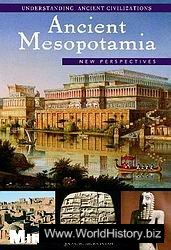 Ancient Mesopotamia: New Perspectives Author: Jane R. McIntosh ABC-CLIO Understanding Ancient Civilizations 2005 ISBN: 1576079651 Format: PDF Size: 9,6 МВ Language: English Pages: 415
 
 Ancient Food Technology Ancient Food Technology 
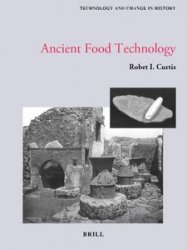 Author: R. Curtis Ancient Food Technology (Technology and Change in History) Brill Academic Publishers 2000 541 Format: Pdf Size: 33,1 MB Language: English This text discusses innovations in food processing and preservation from the palaeolithic period through to the late Roman Empire. It considers the integral role food technology played in the political, economic, and social fabric of ancient society.
 
 The British Museum Dictionary of Ancient Egypt The British Museum Dictionary of Ancient Egypt 
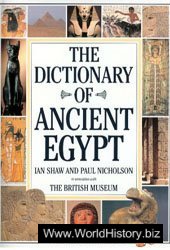 The British Museum Dictionary of Ancient Egypt Author: Ian Shaw, Paul T. Nicholson The American University in Cairo Press 2002 Pages: 328 Format: PDF Quality: Good Language: English Size: 127 mb This successful and highly-esteemed British Museum reference work is now republished in a new pocket-sized edition. This authoritative illustrated dictionary provides clear explanations and descriptions of the important ideas, events and personalities throughout four thousand years of Egyptian civilization. More than 600 extensively cross-referenced and comprehensively-indexed A-Z entries provide detailed information on all aspects of ancient Egypt and Nubia during the pharaonic and Graeco-Roman periods. Each entry is followed by a bibliography. The dictionary is lavishly illustrated throughout with photographs, line drawings, site plans and maps.
 
 Early Dynastic Egypt Early Dynastic Egypt 
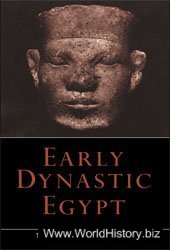 Early Dynastic Egypt Author: Wilkinson T.A.H. Routledge 1999 Pages: 373 ISBN: 0-415-18633-1 Format: pdf Quality: Good Language: English Size: 4,89 mb
 
 Delphi: A History of the Center of the Ancient World Delphi: A History of the Center of the Ancient World 
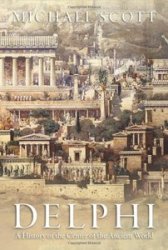 Author: Michael Scott Delphi: A History of the Center of the Ancient World Princeton Univepsity Press 2014 ISBN: 0691150818 Format: EPUB Size: 5,7 МБ Language: English Pages: 448 The oracle and sanctuary of the Greek god Apollo at Delphi were known as the "omphalos"--the "center" or "navel"--of the ancient world for more than 1000 years. Individuals, city leaders, and kings came from all over the Mediterranean and beyond to consult Delphi's oracular priestess; to set up monuments to the gods in gold, ivory, bronze, marble, and stone; and to take part in athletic and musical competitions. This book provides the first comprehensive narrative history of this extraordinary sanctuary and city, from its founding to its modern rediscovery, to show more clearly than ever before why Delphi was one of the most important places in the ancient world for so long. A unique window into the center of the ancient world, Delphi will appeal to general readers, tourists, students, and specialists.
 
 Heroes and Heroines of Greece and Rome Heroes and Heroines of Greece and Rome 
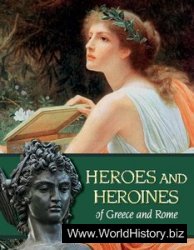 Author: Marshall Cavendish Heroes and Heroines of Greece and Rome Marshall Cavendish Corporation 2001 ISBN: 076147952X Language: English Pages: 320 Format: PDF Size: 54,44 МБ This book explores many heroes and heroines of the Greek and Roman civilizations.
 
 Hudud al-'alam. The Regions of the world: a Persian geography, 372 A.H.-982 A.D. Hudud al-'alam. The Regions of the world: a Persian geography, 372 A.H.-982 A.D. 
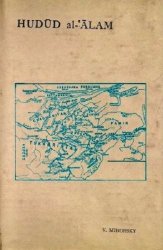 Hudud al-'alam. The Regions of the world: a Persian geography, 372 A.H.-982 A.D. E.J.W. Gibb Memorial Trust 1982 Format: PDF Size: 37,8 mb Quality: Good Language: English
 
 A Dictionary of Jewish Palestinian Aramaic of the Byzantine Period A Dictionary of Jewish Palestinian Aramaic of the Byzantine Period 
 Author: Michael Sokoloff A Dictionary of Jewish Palestinian Aramaic of the Byzantine Period Bar-Ilan University Press 1992 Format: PDF Size: 44,8 МБ Language: English Pages: 832 From the third to the seventh century A.D., the Jews of Palestine used Aramaic as their primary spoken and written language. This dialect has been of considerable interest to Christian scholars, and some have argued that it is the closest dialect to the Aramaic which Jesus would have spoken. Dictionary of Jewish Palestinian AramaicHebrew was used in the first century both in a colloquial form, close to what is found in the Mishnah, as well as in a literary form, close to what is found in the Hebrew documents discovered at Qumran. There is some evidence to suggest that Aramaic was also used with two different “registers,” a literary dialect and a colloquial dialect. The colloquial Aramaic dialect is probably best represented in the Jewish Palestinian Aramaic (JPA) of the Palestinian Talmud and Midrashic stories. Whether Jesus taught mainly in Hebrew or in Aramaic, the dialect of Jewish Palestinian Aramaic recorded in post-Mishnaic sources is a major cultural and linguistic storehouse for our knowledge of New Testament times.
 
 The Cambridge Economic History of the Greco-Roman World The Cambridge Economic History of the Greco-Roman World 
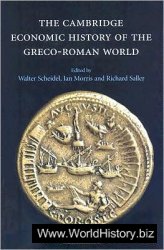 Author: Walter Scheidel (Editor), Ian Morris (Editor), Richard P. Saller (Editor) The Cambridge Economic History of the Greco-Roman World Cambridge University Press 2008 Pages: 958 ISBN: 978-0521780537 Language: English Size: 26.3 mb Format: PDF In this, the first comprehensive one-volume survey of the economies of classical antiquity, twenty-eight chapters summarise the current state of scholarship in their specialised fields and sketch new directions for research. The approach taken is both thematic, with chapters on the underlying determinants of economic performance, and chronological, with coverage of the whole of the Greek and Roman worlds extending from the Aegean Bronze Age to Late Antiquity. The contributors move beyond the substantivist-formalist debates that dominated twentieth-century scholarship and display a new interest in economic growth in antiquity. New methods for measuring economic development are developed, often combining textual and archaeological data that have previously been treated separately. This important work represents a major advance in our understanding of the economic expansion that made the civilisation of the classical Mediterranean world possible.
 
 Warfare in the Classical World Warfare in the Classical World 
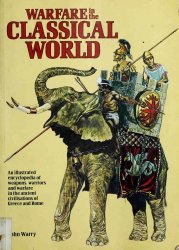 Author: John Gibson Warry Warfare in the Classical World (A Salamander book) University of Oklahoma Press 1980 Format: PDF Pages: 228 Language: English Size: 60.2 MB This superbly illustrated volume traces the evolution of the art of warfare in the Greek and Roman worlds between 1600 B.C. and A.D. 800, from the rise of Mycenaean civilization to the fall of Ravenna and the collapse of the western Roman Empire. John Warry tells of an age of great military commanders such as Alexander the Great, Hannibal, and Julius Caesar - men whose feats of generalship still provide material for discussion and admiration in the military academies of the world. Rich illustrations of soldiers in uniform, equipment, weapons, warships, siege machines, war elephants, and more are accompanied by extensive captions. The text is complemented by a running chronology, 16 maps, 50 newly researched battle plans and tactical diagrams, and 125 photographs, 65 of them in color.
 
 The Oxford Handbook of the Archaeology of the Levant: c. 8000-332 BCE The Oxford Handbook of the Archaeology of the Levant: c. 8000-332 BCE 
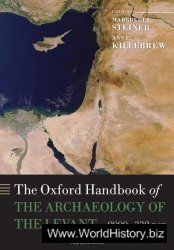 Author: Margreet L. Steiner (Editor), Ann E. Killebrew (Editor) The Oxford Handbook of the Archaeology of the Levant: c. 8000-332 BCE (Oxford Handbooks) Oxford University Press 2014 Format: epub Size: 13.6 Mb Language: English This Handbook aims to serve as a research guide to the archaeology of the Levant, an area situated at the crossroads of the ancient world that linked the eastern Mediterranean, Anatolia, Mesopotamia, and Egypt. The Levant as used here is a historical geographical term referring to a large area which today comprises the modern states of Israel, Jordan, Lebanon, western Syria, and Cyprus, as well as the West Bank, Gaza, and the Sinai. Unique in its treatment of the entire region, it offers a comprehensive overview and analysis of the current state of the archaeology of the Levant within its larger cultural, historical, and socio-economic contexts. The Handbook also attempts to bridge the modern scholarly and political divide between archaeologists working in this highly contested region. Written by leading international scholars in the field, it focuses chronologically on the Neolithic through Persian periods -- a time span during which the Levant was often in close contact with the imperial powers of Egypt, Anatolia, Assyria, Babylon, and Persia. This volume will serve as an invaluable reference work for those interested in a contextualised archaeological account of this region, beginning with the tenth millennium BCE 'agricultural revolution', until the conquest of Alexander the Great that marked the end of the Persian period.
|
|

























 World History
World History









